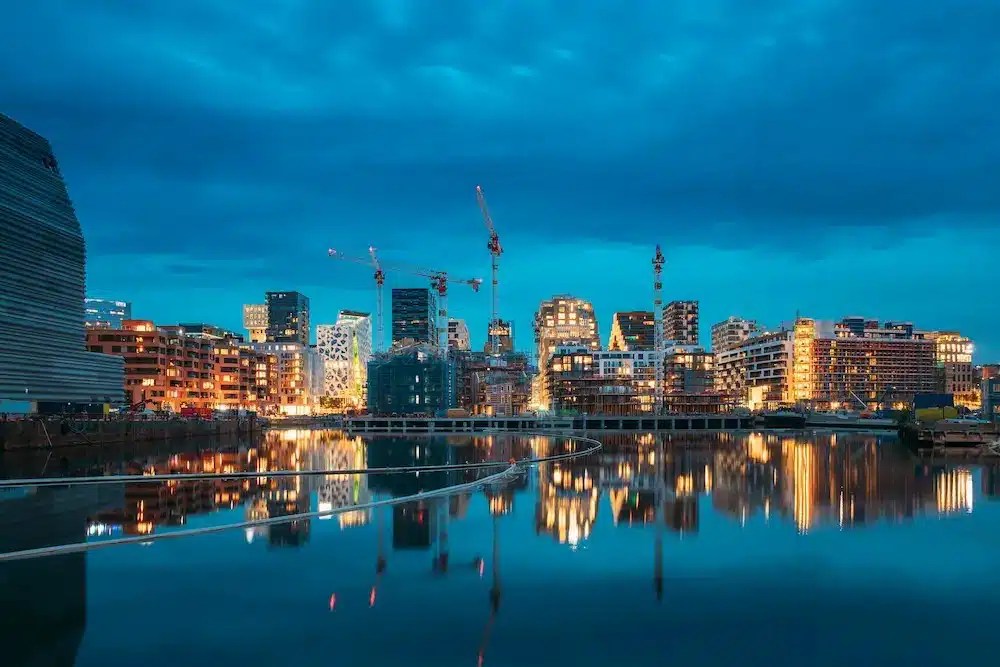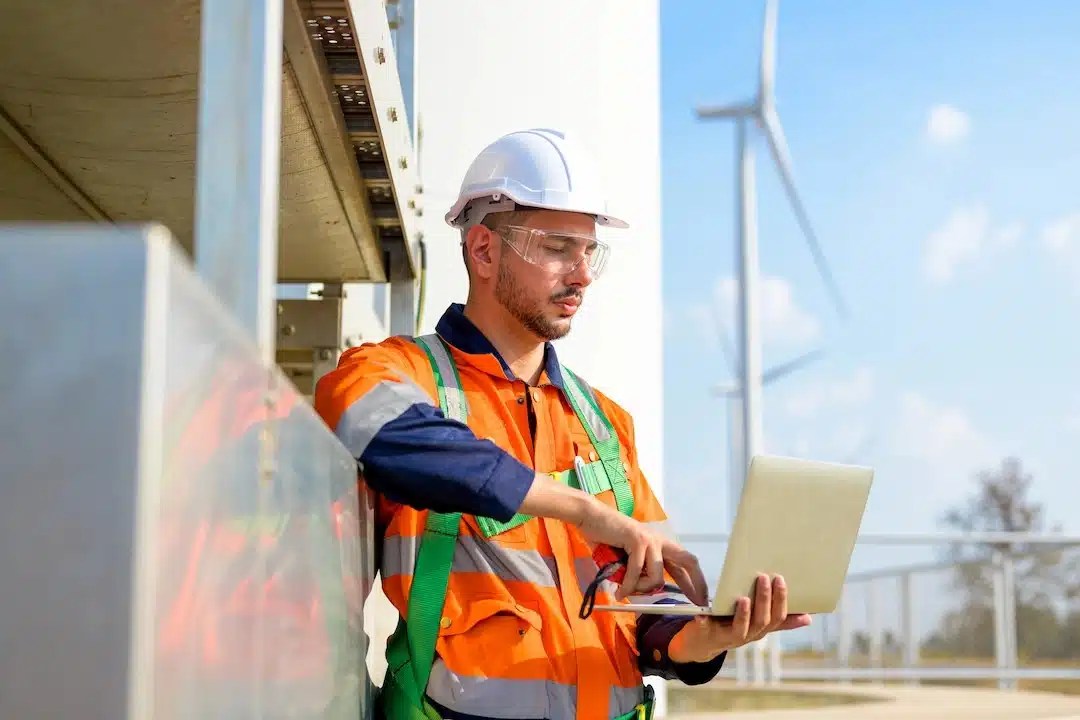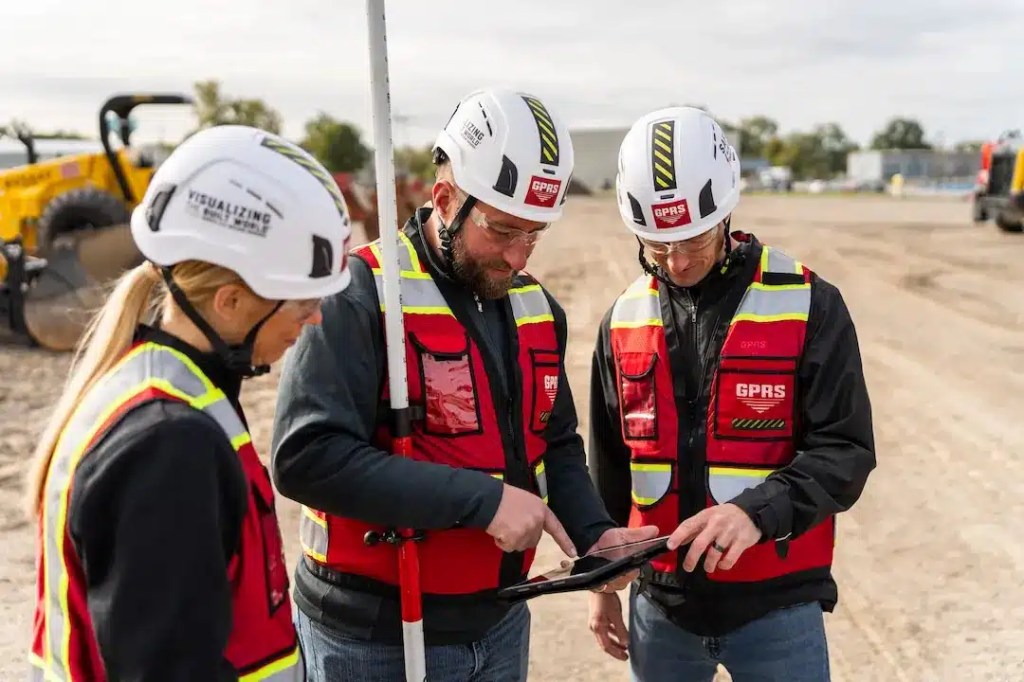As the world continues to grapple with the challenges of climate change and environmental degradation, the construction industry is under increasing pressure to adopt more sustainable practices. This is fueled by the understanding that construction is one of the most polluting fields on the planet, creating a third of the world’s waste. Sustainable construction, also known as green construction or eco-friendly construction, aims to minimize the negative impact of building activities on the environment while maximizing efficiency and resource conservation. SiteMap® (patent pending), powered by GPRS, helps give project managers the proper data and tools to make informed, green decisions.
The Current State
Currently, the world is not on track to achieve world decarbonization by 2050. The Global Status Report for Buildings and Construction (Buildings-GSR) is a flagship publication of the UNEP-hosted Global Alliance for Buildings and Construction (Global ABC). This publication acts as a report on the status of construction and building status, including environmental impact of the field. According to this report, building energy demand increased by around 4% from 2020 to 135 EJ – which was the largest increase in the last 10 years. Further, CO2 emissions from building operations have reached an all-time high of around 10 Gt CO2. This increase is around a 5% increase from 2020 and is 2% higher than the previous peak in 2019.
Many factors are contributing to this rise, with the construction industry being one of the top two leaders. Many sources report on the efforts to decarbonize buildings and the construction industry. Global ABC’s new Buildings Climate Tracker also showed the annual rate of progress on decarbonizing buildings is slowing down, almost halving from 2016 to 2019. However, despite the bleak outlook, there are many actions going into place to try and prevent the rise of emissions, such as the “Renovation Wave” which aims to double building renovation rates within the next 10 years (reducing their footprint.)

Oslo, leading the way: Testing greener construction sites amidst urbanization. Advanced technology and dedicated efforts pave the path to combat climate change. SiteMap® empowers sustainable development.
There are also places such as Oslo, who are testing greener construction sites. The urbanization of many areas means more people will be living in cities, which could lead to higher emissions rates if nothing is done. It’s through advanced technology and dedicated efforts that we can begin to fight climate change and rising emissions. SiteMap® is a comprehensive tool with capabilities to help support the shift to a sustainable path.
Understanding Sustainable Construction
Sustainable construction can be defined as the practice of designing, constructing, and operating buildings in a way that reduces their overall environmental impact. It is driven by the recognition that traditional construction methods have significant negative implications for the environment, including high energy consumption, waste generation, and the depletion of natural resources. The green construction/building market is booming, becoming more popular year by year. With outstanding facts such as the fact that LEED-certified buildings in the US consume 25% less energy and 11% less water, while also reducing CO2 emissions by 34%, it’s easy to see why this style is so desirable.
The benefits of green construction are manifold and extend beyond environmental considerations. One of the primary advantages is the reduction of operational costs over the lifespan of the building. By implementing energy-efficient systems, such as lighting, heating, ventilation, and air conditioning (HVAC), green buildings consume less energy, resulting in lower utility bills and operational expenses.
Additionally, green construction promotes occupant health and well-being by incorporating features such as natural daylighting, improved indoor air quality, and non-toxic building materials, which can enhance comfort, productivity, and overall quality of life. Furthermore, green buildings and green construction practices often command higher property values and rental rates, as they are perceived as more desirable and environmentally responsible investments. Overall, green construction offers a win-win solution, benefiting both building owners and occupants while also contributing to the preservation of the environment.
Key Principles of Sustainable Construction
When it comes to sustainable construction, several key principles guide industry practices toward a more ecologically sound approach. These principles include:
- Energy Efficiency
Incorporating features such as proper insulation, efficient heating and cooling systems, and the use of renewable energy sources. - Water Conservation
Implementing measures to reduce water consumption, such as installing low-flow fixtures, using rainwater harvesting systems, and implementing efficient irrigation systems. - Use of Eco-friendly Materials
Prioritizing the efficient use of resources, promoting energy efficiency, and aiming to minimize waste and pollution throughout the entire lifecycle of a building. - Waste Reduction and Recycling
Embracing energy-efficient technologies, using eco-friendly materials, and adopting waste reduction strategies. - Site Planning & Urban Design
Considering the impact of the construction on the local environment and community. - Indoor Environmental Quality
Ensuring the health and comfort of the people who live and work in the buildings.

Harnessing the power of sustainability: A construction worker utilizes SiteMap® near a wind energy plant, maximizing efficiency and minimizing environmental impact.
The Role of SiteMap® in Sustainable Construction
SiteMap® plays a crucial role in promoting sustainable construction practices. By providing a platform for efficient project management and resource allocation, SiteMap® helps construction companies reduce waste, improve efficiency, and minimize their environmental impact. SiteMap® helps aid sustainable construction in numerous ways:
- SiteMap® enables precise planning and monitoring of construction projects, minimizing resource wastage and reducing the overall environmental footprint.
- By digitizing project data and centralizing communication, SiteMap® reduces the need for paper-based documentation, leading to significant paper savings and a reduction in deforestation.
- SiteMap’s capabilities allow for proactive decision-making, helping to anticipate and mitigate potential environmental risks before they escalate.
- Through streamlined workflows and optimized resource utilization, SiteMap® promotes energy efficiency and reduces carbon emissions associated with construction activities.
- SiteMap® empowers construction teams to adopt sustainable practices at every stage of the project lifecycle, driving positive environmental outcomes and contributing to a greener future.
- SiteMap® enables project manager’s to safely and quickly execute projects through 99.8% accurate GPRS-backed data. This helps prevent environmental destruction and pollution through the means of utility strike.
Advancing Environmental Stewardship Through Innovation
One of the key ways SiteMap® promotes sustainability is through its innovative approach to resource management. By providing accurate, easy to understand insights into project data and resource utilization, SiteMap® helps construction teams optimize their workflows, reduce waste, and maximize efficiency. There isn’t an inch of your job site that is left to the unknown when working with GPRS, who employ thousands of skilled boots on the ground to help carefully and skillfully map job sites like yours. GPRS uses an arsenal of low-impact technologies, such as:
- Ground Penetrating Radar
- CCTV Pipe Inspection
- Drone Imagery
- 3D Laser Scanning
- Mapping and Modeling
And more!

SiteMap® leads the charge in sustainability by revolutionizing resource management for construction teams. With precise data insights and advanced technologies like Ground Penetrating Radar and Drone Imagery, every aspect of the job site is meticulously mapped, optimizing workflows and minimizing waste
Through the technology employed, SiteMap® is able to back the construction industry with accurate, precise data that anyone can understand. This fosters informed decision making, and helps support green construction practices and decisions.
SiteMap® Functionality
The beauty of SiteMap® is that it can geolocate every piece of information so the content can be located and cross-referenced on demand. Here are just a few of SiteMap’s features:
- Secure cloud-based storage
- Upload and store as-built drawings and site records
- Ability to import existing infrastructure data
- Attach videos, photos, GPR data, and other documents
- Access to GPRS data
SiteMap® Enables Green Construction
SiteMap® plays a pivotal role in supporting green construction practices by providing construction professionals with innovative tools and insights to optimize resource utilization, minimize waste generation, and enhance environmental sustainability throughout the project lifecycle. Through its advanced features such as GIS components and 3D Utility Mapping, SiteMap® enables precise planning, monitoring, and management of construction projects, facilitating the implementation of energy-efficient systems, eco-friendly materials, and sustainable design strategies.
SiteMap® boasts plenty of features to help promote sustainable construction methods.
SiteMap® works as a multifunctional application, offering unique capabilities. Some of those capabilities include:
- Infrastructure management
- Infrastructure mapping
- Utility cloud mapping
- Utility management
- GIS mapping
- Digital map viewer
- GPS software
- Geospatial mapping
SiteMap’s second greatest strength is its flexibility, its first is its access to GPRS data and technology. Almost any location data and documentation can be uploaded and organized.
Examples of information a user can view and store include:
- Utility layouts
- As-built drawings
- 3D models
- Floor plans
- Structural drawings
- Subsurface void information
- Drone Imagery
- Sewer and manhole video inspection data
- Underground storage tank information
- Aboveground storage tank information
SiteMap® allows you to quickly access, view, and share your infrastructure data securely with subcontractors, engineers, and your team. All of your utility, structural, water & sewer, and facility information is uploaded into the SiteMap® Map Viewer and Digital Plan Room. You can document construction progress with our Progressive Capture (ProCap) service which utilizes 3D photogrammetry or 3D laser scanning to track the evolution of the site and document key project milestones. Virtual Tours like WalkThru 3D allow you to virtually walk-through a site or facility in minutes, take basic measurements, estimate clearances and distances, and add digital notes.
Sustainability is the way of the future, with many construction businesses opting for greener solutions. WIth visibility being the biggest hurdle, it’s easy to understand that SiteMap® has a clear place in the future of sustainability and construction. SiteMap® has the accuracy and the technology to help the construction industry revolutionize how they plan, execute, and overall manage their projects. From planning to cleanup, SiteMap® can help map the way to a greener and more sustainable future.
Learn more about SiteMap® and our capabilities, contact us today.
